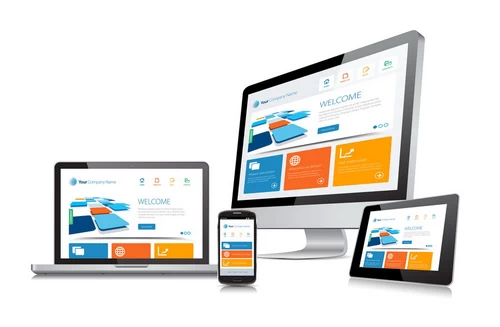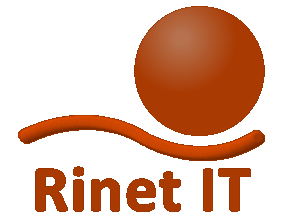SEO or Search Engine Optimisation, is the process of making your site easier to understand by search engines such as Google and Bing so that your site will appear higher in their search results. Read on to learn more.
Google's (and Bing's) SEO Aims
Google (and probably Bing and Yahoo too) want to improve the user experience by encouraging good website design plus content that's relevant and high quality. Good compliance to standards is also on their wish list.
They use this criteria to rank sites in search results; more compliant sites rank higher than those sites that don't comply.
Recently Google have moved to push mobile compatible sites. If your site is not mobile compatible it will not rank well for search results by mobile or tablet device users. These devices are increasing in popularity and they need to be catered for otherwise your site will miss out on mobile customers.

Navigation
Making your site easy to navigate will help your users once you get them to visit your site. It's important to avoid going more than three levels deep in your menus. The most commonly sought after items, for example "about us" and "contact us" should be to the left of the menu, as this where most users focus their attention.
Search Terms
Search terms are what your customers search for with Google. Some thought needs to be given here as you want those who are interested in the services and products your business provides.
Short tail terms such as "painter" are much harder to achieve high rankings for than long tail terms such as "house painter Eltham" for example. Long tail terms are more likely to get the customers you want as their search is closer to what your business is about. If you chose to use Google's Adwords service long tail terms are cheaper to buy.
Your site can target a whole set of search terms by using each page or blog post a search term.
Page Titles and URLs
The page title and its URL should reflect or be the same as the search term you are aiming for. Both the page title and URL will give your page credibility and earn it a better rank with the search engine.
Quality Content

Google loves quality content, that is information that is relevant to your page title (ie search term), easy to read and succinct. Although your provided text is used sometimes it's necessary to modify it slightly to make it more search engine friendly.
It's a good idea to include your search terms in the content; just don't over do it and make sure your text still reads in a natural way.
Headings
Headings not only make it easy for users to find the information they want they also help with SEO. Notice how with this page they help searching for what you want to know much easier. No burrowing through text and paragraphs!
Images

Images make your page more readable by breaking up the text and providing a point of interest. They should reflect and relate somehow to the subject matter or theme of your page. Images should be of the JPEG, PNG or GIF format and be as small in file size as possible to get your site to load fast (another parameter your site can get ranked on).
It's best to start with full resolution copies of your images and then convert them to suitable format and size for website use. Editing, such as cropping out the background (see Tait Stainless for example), takes around 15 to 30 minutes of labour and is an extra cost.
The "ALT" tag for each image can contain your key words plus your business name so that people can get your images in their search results. It may lead to a visit and a new customer.
Joomla and WordPress SEO Aids
WordPress is great for SEO but by adding WordPress SEO by Yoast optimising your pages for SEO is even easier. You start by entering a search term and suggestions pop up. Choose the most appropriate term and WordPress SEO helps you edit the page for SEO. Each page is given a coloured rank in the post list.
There are SEO aids for Joomla but I haven't tried them. Joomla 3 has many additional fields to fill in to make your pages and posts SEO.
Mobile or Responsive

There are two ways that a site can be made mobile compatible. The easiest way is to get your site to format itself automatically depending on the display size. This site for example looks different on desktop and laptop computers than it does on a mobile or tablet device. The content only needs to be generated once and the browser does the rest.
Another way is to create a another site with a different sub-domain, like m.rinet.com.au for example, for a mobile site. This is ideal for content that's great on a desk computer but won't fit onto a mobile device. A separate site means a different user interface can be made, for example, for a pizza shop with online ordering.
Generally if a responsive site is workable that's the most time efficient solution.
Online SEO Tools
There are two main online tools from Google that make managing your site's SEO easier. You will be given access to both Webmaster Tools and Google Analytics so that you check on your site. This can be managed by Rinet IT for a small monthly fee.
Webmaster
Search engines will eventually find your site but to speed the process up your site, along with its site map (a list of your sites pages plus links), should be submitted to Google and Bing. Most WordPress plug-ins can do this for you.
Google Analytics
Google Analytics is a free (premium version available) tool which monitors where and who is using your site. This is invaluable for determining the demographics of your customers and it should match the demographic of your product or service; and if it doesn't your site may need an update.
Note that to get meaningful results a large amount of traffic data needs to be collected and this varies depending how busy your site is. Allow for at least a month or two.
SEO Help
For all of your SEO needs contact Rinet IT. They are the experts in getting your website SEO compliant and getting it to rank well for Google searches.

References:
Enge, E., Spencer, S., Fishkin, R., & Stricchiola, J. C. (2009). The Art of SEO. Sebastopol: O’Reilly Media, Inc.
Google Inc. (2010). Search Engine Optimization Starter Guide. Mountain View: Google Inc.
One comment on “Search Engine Optimisation”
Leave a Reply
You must be logged in to post a comment.
SEO is needed by everyone!